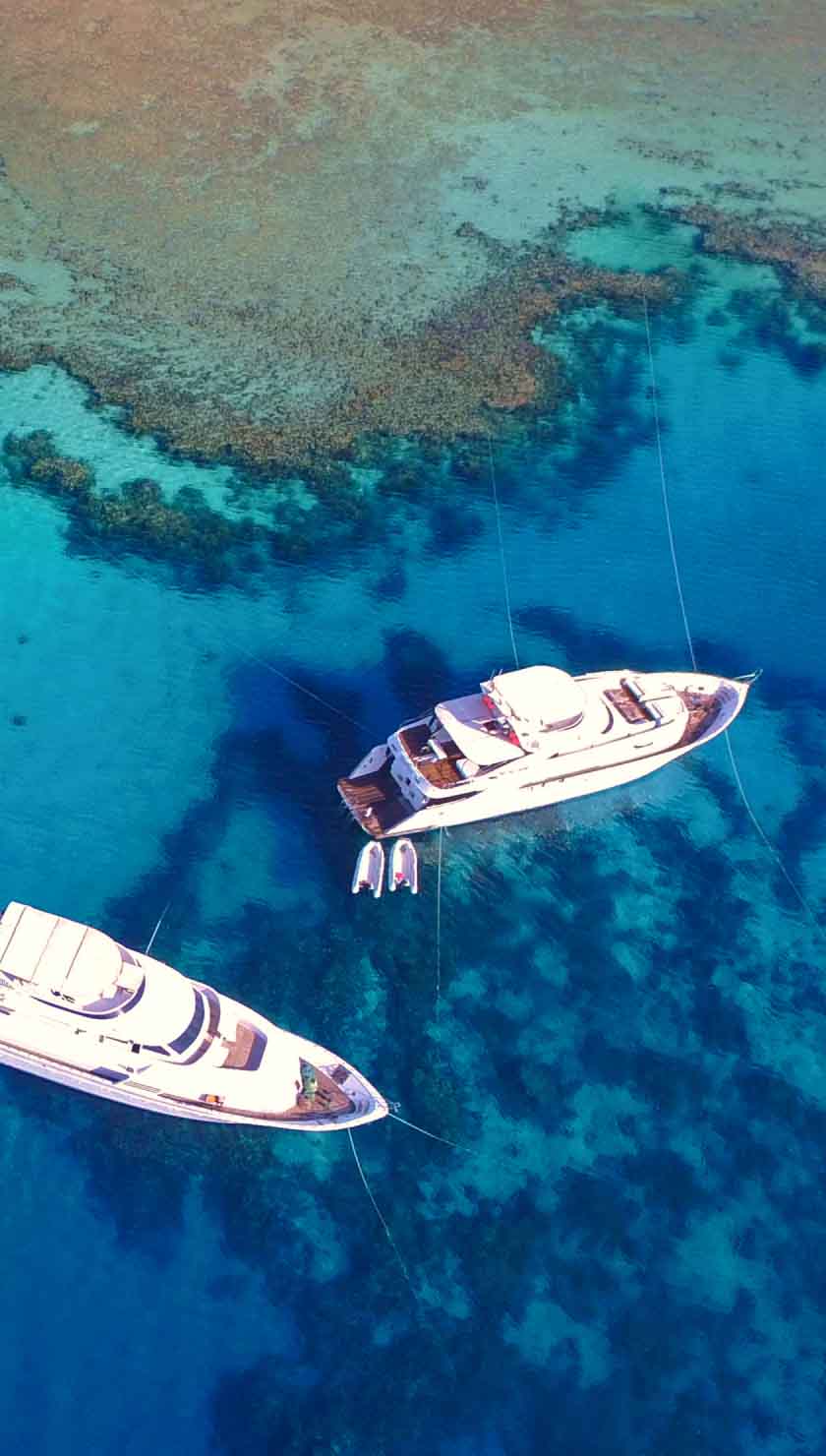Palau Diving Guide: When to Visit for Sharks, Mantas, and Wrecks
In a remote corner of the western Pacific, the islands of Palau rise from turquoise lagoons like a dream. Beneath the surface lies a thriving marine sanctuary — a labyrinth of drop-offs, coral gardens, tunnels, and wrecks patrolled by sharks, manta rays, and swirling schools of fish. With more than 1,500 species of fish and 500 species of coral, Palau is one of the richest underwater ecosystems on the planet. But diving here is influenced by strong tides and shifting seasons. To experience Palau at its most dazzling, it pays to time your visit well. This guide explores the best time to dive in Palau, where to go, and what you can expect to encounter during your dive.

Quick Summary
- Best time to dive: October to May (dry season, calmest seas)
- Water temperature: 27–30°C (81–86°F)
- Visibility: 20 to 40 meters (65–130 feet)
- Marine highlights: Manta rays, grey reef sharks, spawning events, WWII wrecks, Napoleon wrasse
- Season type: Tropical; diving is possible year-round with seasonal advantages
Diving Seasons in Palau
Dry Season (October to May)
This is the best time to dive in Palau, offering the most reliable conditions. Calm seas, light winds, and clear skies make it ideal for both liveaboard and land-based trips. Visibility often exceeds 30 meters, especially around outer reef sites like Blue Corner, Peleliu Wall, and Siaes Tunnel.

This season also coincides with key spawning events. Around the full moon in March and April, groupers and bumphead parrotfish gather in spectacular aggregations. Reef sharks follow closely behind. Sites like Ulong Channel and New Drop-Off offer dramatic, current-fed action, while the German Channel becomes a hotspot for cleaning stations, attracting manta rays.
Wet Season (June to September)
Diving is still possible during Palau’s rainy season, but conditions are more variable. Winds and swell may limit access to outer reefs. Visibility can decrease slightly due to runoff, especially near the Rock Islands and inner lagoons.

However, it’s still a good time to visit for experienced divers willing to chase big-action dives. The crowds thin out, and water temperatures remain warm. Mantas are present year-round, and inner lagoon wrecks like the Iro, Helmet Wreck, and Teshio Maru are accessible even in rougher conditions.
Marine Life Highlights
Palau’s location at the intersection of ocean currents makes it one of the most biodiverse dive locations in Micronesia. Divers can expect to see grey reef sharks, Napoleon wrasse, turtles, schools of barracuda and snapper, and manta rays, particularly at cleaning stations in the German Channel and Ngemelis Channel.
Currents are part of the thrill in Palau, especially at Blue Corner, one of the most famous dive sites in the world. Using reef hooks, divers drift in place as sharks cruise by and massive schools swirl in the blue. Ulong Channel and Siaes Corner offer similar high-adrenaline drifts with stunning coral scenery.

For wreck divers, the inner lagoon is dotted with relics from World War II, including the Iro Maru, Chuyo Maru, and the Buoy 6 Wreck, now overgrown with soft corals and marine life.
Photography Tips by Season
For wide-angle photography, the months of October to May offer peak visibility and sunlight. Early morning dives at Blue Hole, Dexter’s Wall, or Peleliu Express give excellent light angles and clean backgrounds for large subjects. Reef hooks allow you to stabilize for shots of sharks or schooling fish formations.

Macro photographers will find surprises tucked into the walls of Chandelier Cave, among the debris of lagoon wrecks, or nestled in soft coral gardens. Bring a focus light for night dives and explore sites like Short Drop-Off or the Helmet Wreck for nudibranchs, shrimps, and mandarinfish.
Dive Travel Tips for Palau
- Liveaboards vs Resorts: Land-based operations based in Koror offer access to all major sites via day boats. Liveaboards provide more flexibility and access to remote sites, such as Peleliu and the Southwest Palau Islands.
- Booking in advance: Plan at least 6 months in advance for trips during March–April (spawning season), especially if you're targeting specific events or joining a liveaboard.
- Permits: Divers must obtain a Koror State diving permit, and additional permits are required for Peleliu or Chandelier Cave. Many liveaboards include these in the package price.
Liveaboards and Dive Operators
Top-rated liveaboards offer 7– to 10–day itineraries that cover destinations such as Blue Corner, German Channel, Ulong Channel, and more. Land-based dive centers like Sam’s Tours and Fish ’n Fins operate from Koror and provide daily trips with experienced local guides.
Whether you choose a liveaboard, most offer reef hook dives, wreck dives, and cave dives, often in the same week. Nitrox is widely available, and some vessels cater specifically to photographers and tech divers.
Other Top Dive Destinations by Season
Looking to build your diving calendar around the best seasons? You might also enjoy:
- Best Time to Dive in Raja Ampat
- Best Time to Dive in the Galapagos
- Best Time to Dive in Socorro
- Best Time to Dive in the Maldives
Diving in Palau
Palau offers exceptional diving throughout the year, but for the best visibility, calmest seas, and the chance to witness coral spawning and shark aggregation events, the ideal time to visit is from October to May. With its thrilling drift dives, WWII wrecks, and manta-filled channels, Palau remains one of the most complete and awe-inspiring dive destinations on Earth — and timing your trip right can make it even more spectacular.










